Macro Calculator
This free, easy-to-use macro calculator gives you your optimal macronutrients and calories. It’s a weight loss or muscle gain calculator for both women and men.
Combine with macro counting or flexible dieting to reach your goals faster.
How to get leaner and stronger?
Our comprehensive macro-based fat loss program shows you how. Learn more
How do macros work?
The foods we eat are made up of three macros (macronutrients). These are carbohydrates (carbs), protein, and fat.
Chicken is high in protein but has no carbs; rice is high in carbs but has very little fat or protein. The three macronutrients provide the body with energy and raw materials for growth and repair.
By calculating the appropriate daily calorie amount for you, we can then break this down into the best macronutrient ratios to achieve weight loss.
Basic steps for macro counting
- Enter details into the calculator
Make sure to choose the correct goal. - Take note of your calories and macros
These will be the targets you are aiming for each day. - Track your macros
Use an app or pre-plan your meals. - Measure results
Don’t use basic weight scales.
Use proper body composition scales (we recommend Renpho) to measure fat and muscle mass changes.
What is a good macro ratio for fat loss or muscle gain?
Your macros should be based on your Total Daily Energy Expenditure (TDEE) and goals.
The calculator defaults to the best macro ratio proven to work for most people.
This ratio is:
- 30% fat
- Protein is 0.65 grams per pound of body weight,
- The remainder is carbs.
Depending on your goal, this will be either a calorie deficit or a surplus.
You can go further and make more adjustments: Perhaps you’re an extreme endomorph and do better with fewer carbs. Or perhaps you have one kidney and need to eat less protein.
You can fine-tune your results with a bit of math. See how to change your macros here.
What is a good protein ratio?
Rather than a percentage, proteins are based on your body weight. Our calculator has three settings:
- Moderate adjusts the ratio to 0.65 grams per pound of body weight.
This is appropriate for sedentary individuals or people with higher body fat percentages. - High is for active people with moderate strength training and an average body fat percentage.
- Maximum will set the ratio to 1 gram per pound.
This amount is good for bodybuilding and gaining muscle mass. You must be doing intense training.
Find out how to fine-tune your protein ratios when counting macros
Fat macro ratio
Set fat at 30% of daily energy expenditure.
Most people do very well with this amount of fat. See more about choosing the best macro fats. Because of high-fat diets like keto, many people are now eating more fat than they need to.
Carbohydrate macro ratio
Once you’ve calculated protein and fat, the remainder of your daily calories should be from carbohydrates.
Carbs fuel your body and workouts – and are the body’s preferred energy source.
If you are coming from a low-carb background, this may seem high. However, according to respected nutritional research, this is a moderate amount of carbs.
If you are eating according to your TDEE, the notion that carbs cause weight gain or stop fat loss is incorrect.
Using as a Calorie Deficit Calculator
As a weight loss calculator, this tool establishes a safe calorie deficit only.
The Lose option puts you in a 20% calorie deficit, promoting safe, steady weight loss.
The best macro ratio for body recomposition
If you want to recompose your body (lose fat and gain muscle simultaneously), then use the body recomposition calculator.
Macro ratio for maintenance
The Maintain button shows you the macro levels to maintain your current weight.
This is great if you have lost weight and don’t want to gain it back.
Macro ratio for muscle gain
The Gain button puts you in a 20% calorie surplus.
The macro breakdown is designed to build muscle fast in conjunction and must be combined with a comprehensive weight training program.
Underweight people can also use it.
TIP: Try starting with the maintenance goal and gradually increasing calories if you want lean muscle gains.
Calculating macros using your body fat percentage
The calculator uses your body weight to determine calories and macros.
However, you can obtain superior results by using your body fat percentage. The calculator allows you to choose which method: Normal for body weight, Lean Mass for fat percentage.
When to choose the Lean Mass Formula
If you are lean (have a low body fat percentage), choose the Lean Mass formula and enter your body fat %.
If you are classified as obese and have a lot of weight to lose, the lean mass formula is superior. You can read more about macro counting and obesity.
Help? Calculate your ideal body weight or get an assessment of your body fat percentage.
Why the difference? Muscle cells burn more calories than fat cells, so the more accurately we measure this, the better your results will be.
How to calculate macros per meal
You can break this down into meals once you’ve calculated your daily macros in the calculator.
Choose from 2 to 6 meals daily to see the macro ratio you can track for each meal. For some people, this is easier, but for others, this is too much detail.
Do what works for you.
Meal Plans
See a 5-day macro-based meal plan. It includes three meals and two snacks per day.
Macro calculator activity level settings
A higher activity level means a higher daily calorie goal.
For example – if you maintain your weight at 2,000 calories per day, adding vigorous daily exercise means you need more calories to maintain your weight.
If you are sedentary and trying to lose weight, adding exercise will increase your daily calorie goal.
The idea seems counter-intuitive, but more energy is required to fuel your workouts. More workouts lead to increasing metabolism; therefore, more fat is burned!
Undereating is one of the leading causes of the weight loss plateau.
So many of our clients previously “hit the wall” with dieting. They would continually reduce calories, stop losing fat, and gain weight when they eat a little more.
Macro counting defeats this by prescribing the right food and calorie levels.
Which activity level do I choose?
- Sedentary: Just regular everyday activity like a bit of walking, a couple of flights of stairs, eating, etc.
- Light: Any activity that burns 200-400 calories (females) or 250-500 calories (males) over your sedentary amount.
- Moderate: Any activity that burns 400-650 calories (females) or 500-800 calories (males) more than your sedentary amount.
- Extreme: Any activity that burns more than 650 calories (females) or more than 800 calories (males) in addition to your sedentary amount.
Other options for determining your calorie burn
- Use our calories burned calculator – it accurately assesses over 380 activities.
- Use a fitness tracker – like a Fitbit or Apple Watch (note that they can overestimate calorie burn).
- Use a suitable app – like MapMyFitness
Why should I eat more when I exercise more?
High physical activity not fueled with enough calories will lead to muscle catabolism (breakdown of muscle fiber).
This lack of nutrition could stall your weight loss, so eat up if you love to exercise!
I’ve got my macros – now what?
Once you’ve identified your target daily macros, you must determine the macros in all your foods.
By tracking them daily, you can reach your recommended macro targets that encourage fat loss, muscle gain, or whatever your goal may be.
You can learn more about the macro counting system and the flexible dieting philosophy. Many people use an app like Myfitnesspal to track macros.
For more specifics on what to eat – see a sample macro meal plan or a list of macros for familiar foods.
View article sourcesSources
- Mifflin, M. D., St Jeor, S. T., Hill, L. A., Scott, B. J., Daugherty, S. A., & Koh, Y. O. (1990). A new predictive equation for resting energy expenditure in healthy individuals. The American Journal of Clinical Nutrition, 51 (2), 241-247. Link
- McArdle, W. D., Katch, F. I., & Katch, V. L. (2010). Exercise physiology: nutrition, energy, and human performance. Lippincott Williams & Wilkins. Link
- Jequier, E. (1994). Carbohydrates as a source of energy. The American journal of clinical nutrition, 59(3), 682S-685S.
- Lemon, P. W., Tarnopolsky, M. A., MacDougall, J. D., & Atkinson, S. A. (1992). Protein requirements and muscle mass/strength changes during intensive training in novice bodybuilders. Journal of Applied Physiology, 73(2), 767-775. study abstract link
- Grundy, S. M. (1999). The optimal ratio of fat-to-carbohydrate in the diet. Annual review of nutrition, 19(1), 325-341. abstract
- Conlin, L.A., Aguilar, D.T., Rogers, G.E. et al. Flexible vs. rigid dieting in resistance-trained individuals seeking to optimize their physiques: A randomized controlled trial. J Int Soc Sports Nutr 18, 52 (2021). https://doi.org/10.1186/s12970-021-00452-2
2,104 Comments


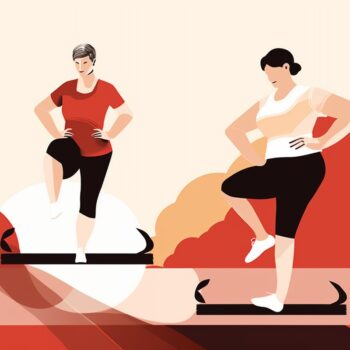 Menopause Macro Calculator
Menopause Macro Calculator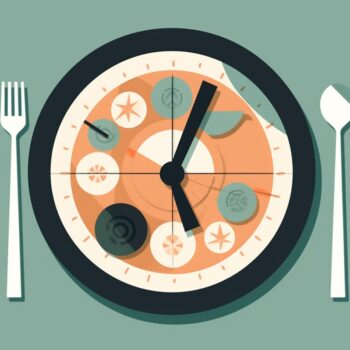 Intermittent Fasting Calculator
Intermittent Fasting Calculator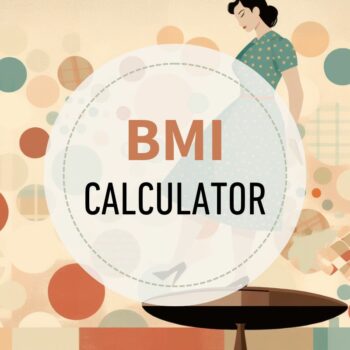 BMI Calculator
BMI Calculator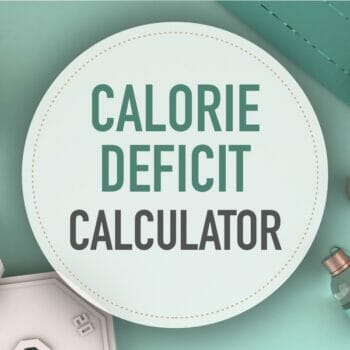 Calorie Deficit Calculator
Calorie Deficit Calculator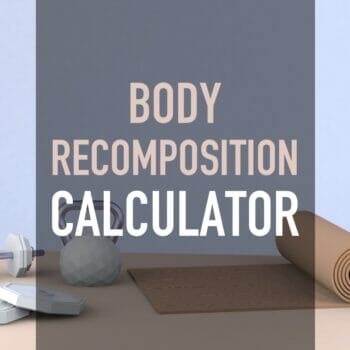 Body Recomposition Calculator
Body Recomposition Calculator
he ted hope your good i need a little help. im 27 5ft 5 and 201. i used the caculator and it says 1814 calories a day 174g carbs 166g protein and 50g fat. i need to lose weight. this just seems like alot to me, is it to much? will i be able to lose weight? and if i don’t let the mfpa do my exercises do i have to manually change my carbs protein and fat intake or do i still do the same amonut. i don’t want to over do it because i really need to lose weight. please helpme all you can
Hi Jessica, Those with more than 50 pounds to lose may need to consider other factors when calculating their TDEE. I can do this for you but you would have to sign up for my coaching package. see here: https://healthyeater.com/macro-solution as for setting things up with MFP see this article: https://healthyeater.com/iifym-myfitnesspal-tutorial I think you’ll love flexible dieting and I would love to help you reach your goals.
Hi! First off, great article, thanks for sharing it. I’m 24 YO F, 5’2 and 115lbs, I had a hydrostatic test done that showed my body fat as 20.2% and BMR is at 1432. I’m an RN and walk on average 5 miles at work, I lift 5-6/week and on my days off I will do cardio burning 200-400cals per session (sometimes twice a day). I was doing Whole30 since January and haven’t lot a SINGLE pound. I decided to estimate how much I’ve been eating and see that it’s been around 1000 calories (not starving at all, just eating intuitively). Now I’m thinking that I need to eat more..I’d like to incorporate more of the Whole30/less processed food into iifym but I find it will be hard to meet my carbs, would it be okay to do high fat and low carb? Today I tried to eat 1400 calories and I feel so full! I calculated this on a different site but I got 1424 calories and P101 C111 F64..it’s much different than what I got using your calculator. I know this is a long question, thanks so much for your help
Hi Kristy, I think you’re correct that you aren’t eating enough and I would say 1400 isn’t enough either based on your description of the exercises you do. You have to support your metabolism and all the exercise you are doing. I also think you should eat the carbs. Unless you have food allergies Whole30 isn’t necessary and you can still choose whole food sources of carbs like rice, quinoa, oats etc.
Should I be lowering my caloric intake on days when I’m not working out?
For most people, I recommend that they eat at their sedentary TDEE on rest days. I would appreciate it if you have a look at my book as it offers a lot more help and pointers. https://healthyeater.com/macro-solution
Hi Ted!
I am 29 130lbs 5’4″ I do crossfit 4-5 times a week and burns roughly 400-500 sometimes more. Paleo isn’t working for me and I’ve decided to try this out. I was staying low carb. Flexible dieting is keeping me at 233g of carbs. Isnt this too high?! I am looking to just lean out and tone. I don’t want to go lower then 130.
Hi Lauren, Absolutely not, you’ll find that your workouts will be much easier with those carbs and you should even have more progress because of them. You’ll probably have to do “lose 10%” and high protein to achieve the goal you’ve set. All the best!
I’m going to follow that! Thanks Ted. The high numbers just scare me!!
Hello Ted! I am unsure if the calculator puts into the equation the amount of weight that I want to get rid of. I want to lose weight and then tone. And I want lasting weight loss results. I do kot eat red meats so this is a problem. But here are my stats!
I am 155 lbs
Goal weight is 125
22 years old
5.6 feet tall
I am lightly active. I am a hairdresser so i am on my feet constantly for 40+ hours a week.
SMM 49.4 lbs
Body Fat Mass 63.6 lbs
BMI 25.8 kg/m^2
PBF 41.0%
Dry Lean Mass 24.7lbs
I am currently using the my fitness pal app. So I am mostly interested in where to set my macronutrients.
The calculator said…
43.5% CARBS
31.5% PROTEINS
25.0% FATS
I look forward to hearing back from you. Thank you, Alexa
Hi Alexia, Flexible dieting should work great for achieving your goals. You don’t have to eat red meat and you can eat whatever you want as long as it fits your macros. In my book, I show you exactly how to set everything up in MyFitnessPal and much more. Please check it out. https://healthyeater.com/macro-solution
Hello Ted! How are you? I have a couple of questions. First, I have been reading that the optimal macro ratio for weight loss is 40%f 40%p 20%c is this true? Would i loose fat faster with this ratio? And the second thing is I work out 6 times a week, 3 sessions of Kayla Itsiness BBG guide that`s resistance training and 3 spinning 45 minute classes that are very hard and challenging. So, what do I put in activity level? Light or moderate? I want to loose fat and build muscle, I`m 160m and 60kilos, female. Thanks a lot for your valuable input 🙂
Hi Andrea, I’m great thanks 🙂 A more low carb type diet can produce faster fat loss results as long as a calorie deficit exists, but these benefits are more short-term. Flexible dieting, with a more “normal” macro ratio, is more sustainable long-term and while the results may be slower at first, it evens out as the diet progresses. You probably would want to choose “lose 10%” since you are about 5kg away from your ideal weight and you want to build muscle. How many calories does your spin session burn?
Thanks for answering!! I`m guessing around 400 cal, its very intense, dripping sweat level. I was also thinking of replacing the BBG days for weight lifting sessions.
That’s right at the borderline between light and moderate so it’s your call. Maybe start with light and then see how you go? Yes, weight training will probably do a better job of building muscle. I have an easy to do circuit outlined in my book here: https://healthyeater.com/macro-solution
Hello. I need to lose more than 50 lbs. I used my lean body mass in my calculator, chose: Lose goal and Low protein. Is it correct? Can I use Normal protein instead or stick with Low for some time? I started excercising too.
Thank you!
Hi Tina, I’m not sure as I’d have to see your stats and know more details about your exercise. Using lean body mass isn’t always appropriate.
220 lbs, 5 6”, 28 years
Lean body mass:126 lbs, BMI 35,01, FFMI 20.4, adjusted FFMI 19,7.
I want to lose at least 50 lbs.
I go to the gym 3 times a week (light work on the machines plus bike or elliptical machine) plus 20-30 minutes easy workout for beginners 3 times a week. Other than that my lifestyle is rather sedendary.
I was really skinny my whole life but I was suffering from depression for over two years and eat a lot of junk food with almost no activity.
I would really aprecciate any help.
Thanks for the clarification. Using lean body mass would be part of the equation in your case, but fat tissue isn’t non-metabolic so we can’t ignore it. It would have to be considered as well. You would also need to use two sets of macros. One set for rest days and one set for your exercise days. I would love to coach you and help you reach your goals. Check out the options here. https://healthyeater.com/macro-solution With the 3rd option, I calculate your macros for you. All the best with your journey to get healthier!
btw. I am trying to lose weight and track macros at the same time.
Hi Ted! I am trying to figure out my macros but
Im having trouble figuring out my car intake. I am a 25 year old female. I weight 65kg and I am 165cm. I consider myself very active. Please Help!
Thanks,
Berenice
Hi Bernice, I’m sorry, but I’m not sure I understand your question. It seems like you may need to take some time and read about the basics of flexible dieting. Please have a look at my book https://healthyeater.com/macro-solution or here: https://healthyeater.com/flexible-dieting
Hi Ted, I’m 49, 244, and 5’6″ and am wondering if I have the correct calculations. Protein 206, Carbs 114, Fat 47. Due to my A.S. I am not able to exercise at this time so whatever exercise I get is just daily office work and cooking dinner at night with clean up after.
Hi Karla, For those with more than 50 pounds to lose it can be a tad trickier to get your macros /TDEE in the most productive ratios/amount. You would want to choose “low” protein and consider your fat free mass index when coming up with your TDEE. I would ask that you consider buying my book with the coaching option. This way I can personally calculate your macros for you and help you be successful. Since you can’t exercise, it’s crucial that we get your macros at the best ratio possible. See here: https://healthyeater.com/macro-solution
Ted, I have more than 50lbs to lose. How do I use my lean body mass to calculate macros?
Hi Jennifer, Use this resource. http://www.naturalphysiques.com/28/fat-free-mass-index-ffmi
Hi Ted, I’ve just started on my cross fit routine and since stopping, I’ve put on 15-20 pounds. Would this type of diet be what I should going for?? My goal is to lose some fat and tone up. I am 5 ft 28 year old Female.
Hi Jamjam, Yes, flexible dieting is an effective method for achieving that goal.
Hi ted I’m 34 130lbs n 5ft6 n I want to lose some weight n tone up doing 5x hitt a week n some weights after so it says on those hitt days 1650 cals n on rest 1270 cals well I’m scared as I was only going 1200 n eating low carb high protein and fat.so if I stick to these macros n add to my mfp I should start losing pls advise me as don’t want to go down Rd of fad diets I need to do this correctly any help or advice I’d really appreciate it ?
Hi L-J, Flexible dieting isn’t a fad but advises eating a normal ratio of macros in relation to your target TDEE. I suggest that you give it a try. You need to fuel your body properly to get results at the gym and on the scale. Check out my book which explains everything you need to know. https://healthyeater.com/macro-solution